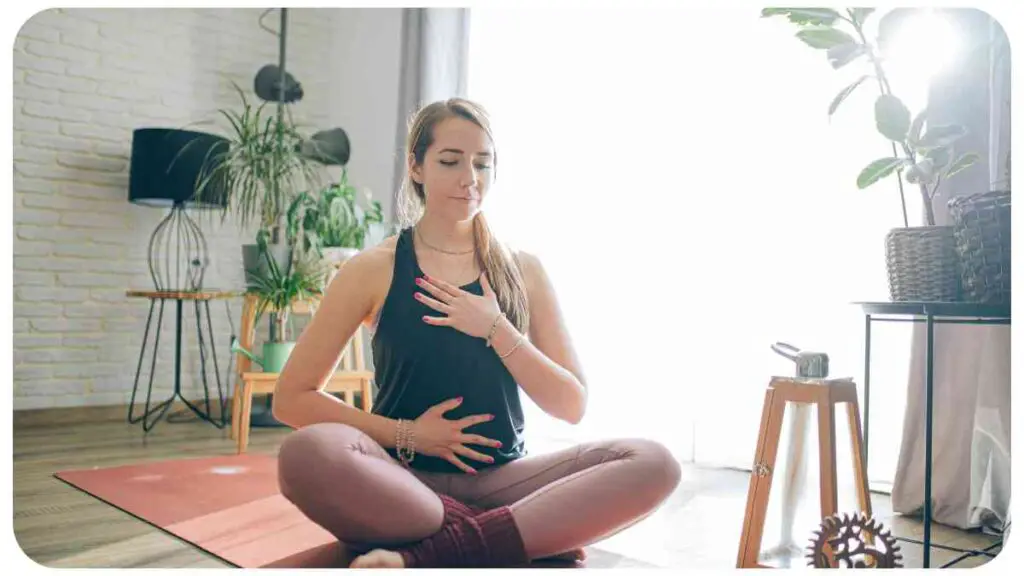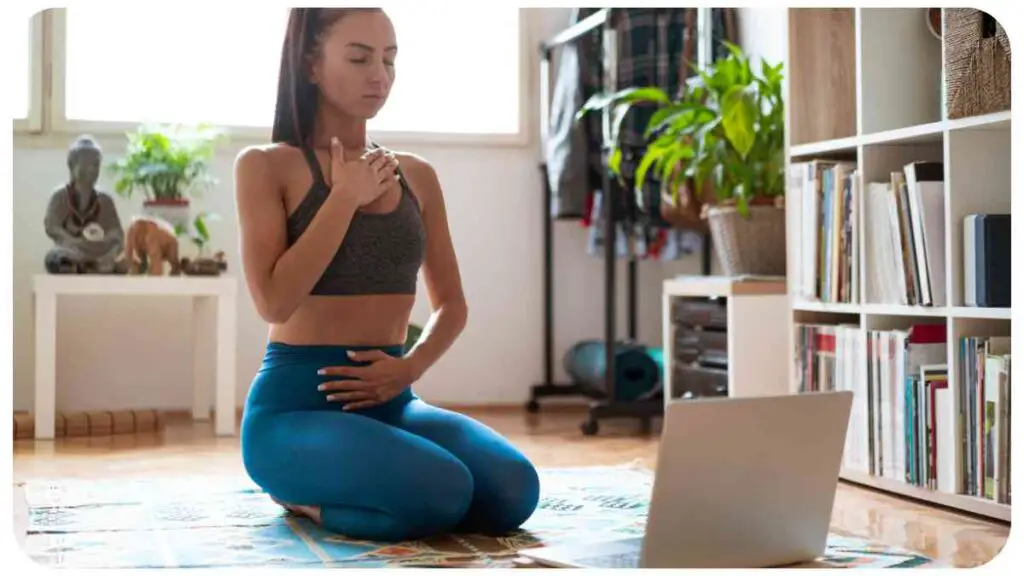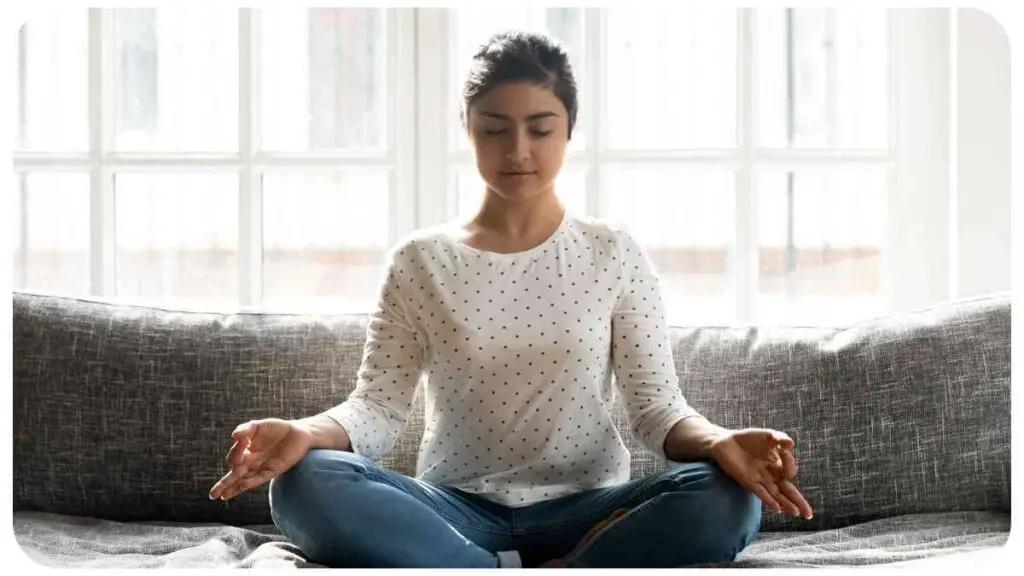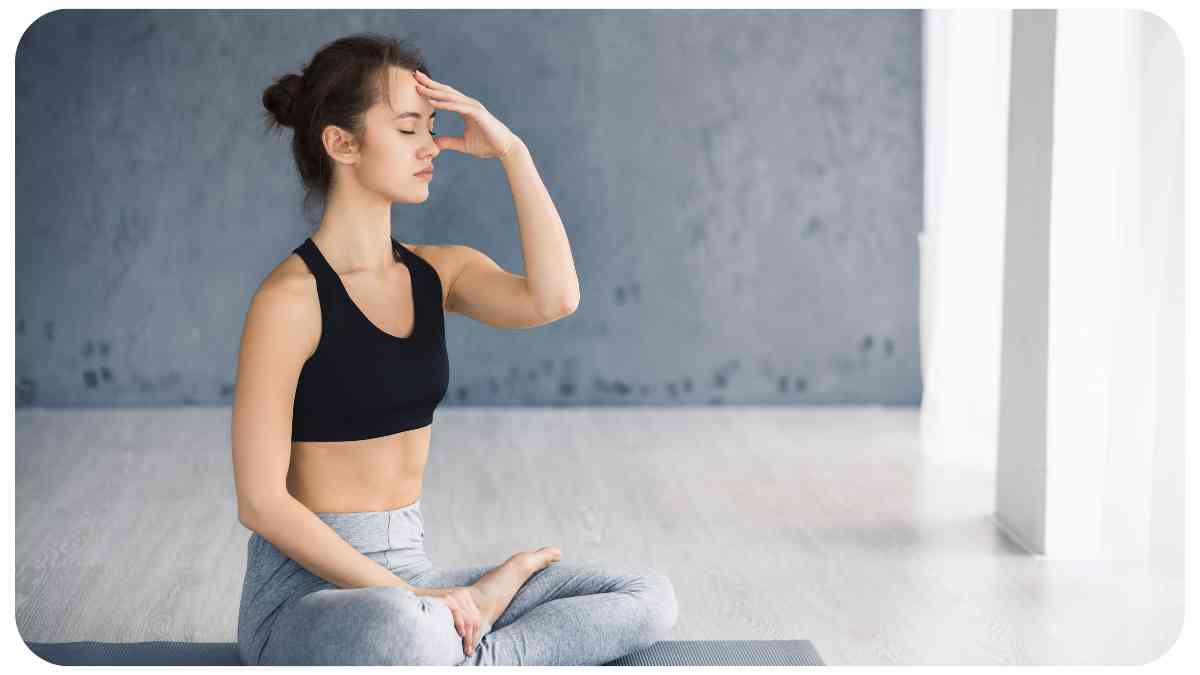Welcome to a transformative journey through the world of yoga and the vital role breath plays within it. In the practice of yoga, the breath is regarded as the bridge between the physical and the spiritual. Pranayama, the yogic science of breath control, allows us to harness the power of our breath to connect with ourselves on a deeper level.
In this article, we will explore the profound importance of breath in yoga and discover the wonders of Pranayama.
| Key Takeaways |
|---|
| 1. Pranayama is a powerful breathing practice that plays a vital role in yoga. |
| 2. Proper breath control enhances physical performance, boosts energy levels, and improves focus. |
| 3. Pranayama helps deepen the mind-body connection and cultivates mindfulness. |
| 4. Different Pranayama techniques offer unique benefits such as balance, calmness, or cooling effect. |
| 5. Consistency, gradual progression, and seeking guidance can deepen your Pranayama practice. |
| 6. Integrating Pranayama into your yoga routine prepares you for asanas and enhances meditation. |
| 7. Pranayama should be practiced with proper posture, breath awareness, and in an ideal environment. |
| 8. Pranayama is for everyone, but precautions should be considered, especially in certain health conditions. |
| 9. Additional resources can be explored to further understand the importance and benefits of Pranayama. |
2. What Is Pranayama?
Pranayama is derived from two Sanskrit words: “prana” meaning life force or vital energy, and “ayama” meaning expansion or control. Together, Pranayama represents the expansion and regulation of this vital life force energy through the practice of specific breathing techniques.
Pranayama is much more than just breathing exercises; it is a holistic science that encompasses the regulation of breath, energy, and consciousness to achieve optimal well-being.
Building a strong spiritual connection while practicing yoga is essential. Explore our guide on tapping into the deeper meaning of your yoga practice and discover how to enhance your spirituality through yoga and spirituality for a more enriching experience.
3. The Science Behind Pranayama

To truly grasp the importance of Pranayama, it is essential to understand the scientific principles that underpin its benefits. When we deliberately control our breath, we influence the autonomic nervous system, which consists of the sympathetic and parasympathetic branches.
Through Pranayama, we can activate the parasympathetic branch, leading to a state of deep relaxation, balance, and restoration. This profound shift allows us to tap into the body’s natural healing abilities, promoting good health and overall well-being.
4. Benefits of Pranayama
The practice of Pranayama brings a multitude of benefits that positively impact both the body and mind. Let’s explore some of the remarkable advantages that come with incorporating Pranayama into your yoga practice.
Enhanced Breath Control
By engaging in specific Pranayama techniques, we develop better control over our breath. Conscious breathing not only enhances lung capacity but also improves the efficiency of our respiratory system. Over time, this leads to greater overall breath control, allowing us to navigate challenging yoga asanas and daily activities with ease.
Achieving ultimate enlightenment through ancient yoga practices is within your reach. Unlock the secrets of ancient yoga practices and embark on a transformative journey towards enlightenment by exploring our guide on ancient yoga practices.
Reduced Stress and Anxiety
One of the most significant benefits of Pranayama is its ability to reduce stress and anxiety. Deep, controlled breathing activates the relaxation response, lowering cortisol levels and promoting a sense of calm. The calming effect of Pranayama enables us to release tension, find balance, and approach challenging situations with a clear and composed mind.
Improved Lung Function
Regular practice of Pranayama helps improve lung function by expanding lung capacity and strengthening the respiratory muscles. Through various techniques such as deep belly breathing and alternate nostril breathing, we can purify the lungs, increase oxygen intake, and eliminate toxins, promoting optimal respiratory health.
Boosted Energy Levels

By incorporating Pranayama into your yoga practice, you can experience a significant boost in your energy levels. Deep and controlled breathing techniques increase the flow of oxygen throughout the body, providing a natural energy surge. This revitalization not only enhances physical performance but also invigorates the mind, improving focus and concentration.
Enhances Mind-Body Connection
Pranayama serves as a powerful tool to deepen the mind-body connection. As we become more attuned to our breath, we develop a heightened awareness of bodily sensations and emotions.
This heightened awareness creates a profound sense of presence and mindfulness, allowing us to connect with our inner selves and cultivate a deeper understanding of our physical and mental states.
5. Different Types of Pranayama Techniques
Pranayama encompasses a wide range of techniques, each offering unique benefits. Let’s explore some popular Pranayama techniques and their effects on the body and mind:
Anulom Vilom (Alternate Nostril Breathing)
Anulom Vilom is a simple yet powerful Pranayama technique that involves alternating the breath between the left and right nostrils. This technique helps balance the flow of energy in the body, promoting a sense of harmony, clarity, and emotional stability.
Yoga is not just a physical exercise; it can have profound spiritual benefits. Connect with your higher self through yoga and discover the spiritual power it holds. Learn how yoga can help you on your spiritual journey in our comprehensive guide on the spiritual benefits of yoga.
Kapalabhati (Skull Shining Breath)
Kapalabhati is an invigorating breathing technique that involves rapid and forceful exhalations paired with passive inhalations. This energizing Pranayama technique clears the mind, boosts vitality, and detoxifies the respiratory system.
Ujjayi (Victorious Breath)
Ujjayi Pranayama is known for its soft and soothing sound produced by partially closing the glottis. This technique encourages slow and deep breathing, inducing a sense of calmness, reducing stress, and building heat within the body.
Bhramari (Bee Breath)
Bhramari Pranayama mimics the gentle humming sound of a bee. By creating a resonating vibration in the head, this technique helps alleviate anxiety, calm the mind, and promote mental clarity and focus.
Sheetali (Cooling Breath)
Sheetali Pranayama involves curling the tongue and inhaling through it, creating a cooling sensation in the body. This technique is particularly useful in reducing body temperature, quelling anger, and pacifying the nervous system.
Table: My Favorite Pranayama Techniques and Their Effects
| Pranayama Technique | Effects on Body and Mind |
| Anulom Vilom | Promotes harmony, clarity, and emotional stability |
| Kapalabhati | Boosts vitality, clears the mind, and aids in detoxification |
| Ujjayi | Induces calmness, reduces stress, and generates heat |
| Bhramari | Alleviates anxiety, enhances mental clarity, and focus |
| Sheetali | Cools the body, reduces body temperature, and calms nerves |
By incorporating these Pranayama techniques into your practice, you can personalize your yoga experience and cater to your specific needs and goals.
6. How to Practice Pranayama Properly
To fully experience the benefits of Pranayama, it is crucial to practice it correctly. Here are some guidelines to ensure proper execution:
Are you seeking relief from back pain? Yoga can be a safe and effective practice for alleviating discomfort. Explore our guide dedicated to practicing yoga for back pain to find the right poses and techniques that can help you find relief and improve your well-being.
Creating the Ideal Environment
Find a quiet and clean space where you can practice without distractions. Eliminate any potential disturbances and create an ambiance that promotes tranquility and focus.
Posture and Alignment

Maintain a comfortable seated posture with a straight spine. You can choose to sit on the floor with crossed legs or use a supportive cushion or yoga props for added comfort. Ground yourself and find a position that allows for relaxed breathing.
Breath Awareness
Begin by observing your natural breath without attempting to control it. Gradually shift your focus to a slower, deeper breath pattern, emphasizing the inhalation and exhalation. Notice the sensation of the breath as it enters and leaves your body.
Choosing the Right Time
Pranayama can be practiced at any time of day, but for optimal results, it is recommended to practice early in the morning when the mind is fresh and the atmosphere is serene. However, choose a time that aligns with your schedule and allows for a dedicated practice.
Gradual Progression
Start with simpler Pranayama techniques and gradually progress to more advanced ones. It is important to listen to your body and not force any breath retention or prolonged practices until you have built a solid foundation.
Frequently Asked Questions about Pranayama
Pranayama practice often raises common queries among beginners. Here are answers to some frequently asked questions:
Proper breathing techniques are crucial in yoga for maximizing its benefits. Discover the pros, cons, and useful tips on various breathing techniques in yoga. Enhance your practice and deepen your understanding of pranayama with our comprehensive guide on breathing techniques in yoga.
Can anyone practice Pranayama?
Yes, Pranayama is accessible to people of all ages and fitness levels. However, certain medical conditions or pregnancy may require modifications or guidance from a qualified yoga instructor. It is always best to consult with a healthcare professional before starting your Pranayama journey.
Table: Benefits of Pranayama for Different Individuals
| Individuals | Benefits of Pranayama |
| Athletes | Enhanced endurance, increased lung capacity, and improved focus |
| Office Workers | Stress reduction, improved concentration, enhanced productivity |
| Elderly Individuals | Increased lung capacity, improved respiratory health, reduced anxiety, and enhanced well-being |
| Students | Improved memory, heightened concentration, stress reduction, and increased mental clarity |
| Pregnant Women | Reduced stress and anxiety, better blood circulation, relaxation, and improved sleep |
| Individuals with Asthma | Strengthened respiratory muscles, improved lung function, reduced symptoms of wheezing and shortness of breath |
| Individuals with Anxiety | Calming effect, lowered cortisol levels, improved emotional well-being |
How long should each Pranayama session last?
The duration of a Pranayama session depends on the individual’s capacity and the specific technique being practiced. Initially, start with shorter durations of 5-10 minutes and gradually increase the time as you become more comfortable. Aim for a practice of 15-30 minutes, but remember that quality is more important than quantity.
Can Pranayama cure diseases?
Pranayama is not a substitute for medical treatment. While it can support overall well-being and contribute to better health, it should not be relied upon as the sole treatment for serious medical conditions. Consult with your healthcare professional for specific medical advice.
Are there any precautions to consider?
Certain precautions are necessary when practicing Pranayama. Avoid starting Pranayama immediately after a meal, as it can interfere with digestion. If you experience dizziness, lightheadedness, or discomfort during Pranayama, slow down or pause the practice. Always listen to your body and practice within your limits.
8. Incorporating Pranayama into Your Yoga Routine
Preparing for Asanas with Pranayama
Pranayama can be integrated into your yoga practice as a warm-up or preparation for asanas (yoga postures).
Performing Pranayama before asanas helps to center your mind, relax your body, and cultivate a focused and calm state. It also helps to increase oxygenation, warm up the respiratory system, and improve breath control before entering into more dynamic movements.
Combining Pranayama and Meditation
Pranayama can serve as a bridge between the physical and meditative aspects of yoga. After practicing asanas, you can transition into a seated position and engage in Pranayama to further quiet the mind and deepen your meditation practice. The conscious breathing helps to cultivate presence, clarity, and a deeper state of relaxation, allowing for a more profound meditative experience.
Finding Balance in Your Practice
Balancing your yoga practice with a combination of asanas, Pranayama, and meditation creates a well-rounded and holistic approach.
Each element works in harmony to nourish and strengthen the body, calm the mind, and connect you with your inner self. Remember to listen to your body’s needs and find the right balance between dynamic movement, breath control, and stillness.
9. Tips for Deepening Your Pranayama Practice
To deepen your Pranayama practice, consider the following tips:
Consistency and Regularity
Consistency is key in any yoga practice, including Pranayama. Aim to practice Pranayama regularly, ideally daily, to experience the cumulative benefits. Even short sessions can be highly beneficial, so maintain a consistent routine that works for you.
Gradually Increasing the Duration
As you become more comfortable with your Pranayama practice, gradually increase the duration of each session. Start by adding a few additional breaths or minutes to your practice. Remember to progress at a pace that feels comfortable and sustainable for your body.
Exploring Advanced Techniques
Once you have established a strong foundation in Pranayama, you may wish to explore advanced techniques. Techniques such as Bhastrika (Bellows Breath), Shitali (Cooling Breath), or Surya Bhedana (Right Nostril Breath) can provide additional benefits. It is crucial to learn these techniques from an experienced practitioner or under the guidance of a qualified yoga instructor.
Seeking Guidance from an Experienced Practitioner
If you feel the need for more personalized guidance or have specific goals in your Pranayama practice, seek guidance from an experienced Pranayama practitioner. They can provide insights, correct alignment, and offer customized techniques tailored to your needs.
11. The Journey Within: Mind, Body, and Breath
Pranayama is not just a physical practice but a journey of introspection and self-discovery. As you explore different breathing techniques and harness the power of your breath, you will uncover deeper layers of yourself. Pranayama offers an opportunity to connect with your inner self, release stress, and nourish your mind, body, and soul.
12. Final Thoughts and Takeaways
Pranayama is a transformative practice that holds immense power to positively impact your physical and mental well-being. By cultivating breath awareness, practicing different techniques, and integrating Pranayama into your yoga practice, you can unlock the profound benefits it offers.
Embrace the journey, be patient with yourself, and let the breath guide you toward a harmonious and balanced life.
Further Reading
Here are some additional resources to explore the importance of breath in yoga and the benefits of Pranayama:
The Importance of Breath in Yoga (mindbodygreen): This article discusses the significance of breath in yoga, the connection between breath and movement, and how conscious breathing enhances your practice.
The Importance of Breath in Yoga (EkhartYoga): Explore this article to understand the fundamental role breath plays in yoga, how it affects the nervous system, and how breath control techniques improve your overall experience on the mat.
Pranayama: Benefits and Techniques (Healthline): This comprehensive guide focuses on the benefits of Pranayama, its effects on physical and mental health, and provides an overview of various Pranayama techniques.
FAQs
Below are some frequently asked questions about Pranayama and their answers:
Q: Can anyone practice Pranayama?
A: Yes, Pranayama is suitable for people of all ages and fitness levels. However, it’s recommended to consult with a healthcare professional if you have specific health concerns or conditions.
Q: How long should each Pranayama session last?
A: The duration of a Pranayama session can vary depending on individual capacity and the specific technique practiced. Start with shorter durations of 5-10 minutes and gradually increase the time as per your comfort and abilities.
Q: Can Pranayama cure diseases?
A: Pranayama is a beneficial practice for overall well-being, but it should not be considered a sole treatment for serious medical conditions. It is essential to consult with a healthcare professional for specific medical advice.
Q: Are there any precautions to consider while practicing Pranayama?
A: Yes, a few precautions should be taken. Avoid practicing Pranayama directly after meals, and if you experience dizziness or discomfort, slow down or pause your practice. Always listen to your body and practice within your limits.
Q: How can Pranayama benefit different individuals?
A: Pranayama offers benefits to various individuals. It can enhance endurance and focus for athletes, reduce stress and improve concentration for office workers, and improve respiratory health and well-being for the elderly. These benefits can vary based on individual needs and goals.

Hello, my name is Hellen James! I am a yoga teacher and writer who loves to share information about how you can achieve a more fulfilling life. I have been practicing mindfulness, yoga, and meditation for over 10 years. My passion for these practices has led me to teach them to others.

